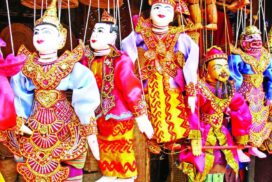Preservation and conservation measures are crucial to prevent the disappearance of both tangible and intangible cultural treasures. These kinds of cultural heritage not only narrate the history of humanity but also represent the culmination of societies that have weathered various eras, encompassing moments of joy and sorrow throughout the world’s history.
The evolution of cultural progress, driven by the ever-changing movements of humanity, is ceaseless. While the global community continues to expose ancient cultural heritage, some of these precious artefacts gradually fade away and vanish due to the negligence of relevant human societies. Conversely, newer cultural properties emerge and become integrated into society.
Safeguarding tangible and intangible cultural heritage is paramount to preserving humanity’s rich history and societal achievements for future generations. By acknowledging and protecting these invaluable cultural treasures, we can pass on a legacy that speaks of our shared heritage and fosters a deeper understanding of our collective past.
It is natural for older cultural elements to gradually diminish, only to resurface in new forms over time, much like the cycles seen in religious orders. For instance, we currently witness unprecedented occurrences concerning cultural heritages, but these objects will eventually become older themselves. As a result, some may be forgotten and replaced by newer cultural elements, while others that genuinely resonate with society will endure and become future heritage. Time serves as the ultimate judge of the societal value of these cultural properties.
The world is adorned with cultural heritage scattered across various regions. Some hold great significance for global society due to their immeasurable cultural value. While certain cultural elements may have only emerged a few years ago, their profound cultural significance can classify them as heritage entities for society.
However, not all objects and elements displaying artistic masterpieces can be considered cultural heritages. Only the finest and most remarkable arts and crafts can be found in these treasured cultural assets. Moreover, for an object to be recognized as a cultural heritage, it must withstand the test of time and endure successive eras.
Myanmar, in particular, boasts abundant cultural heritage throughout the nation, influenced by the customs and nature of diverse ethnic groups, geographical conditions, and historical backgrounds. The country continues to create new cultural heritage, further enriching its national identity. While not all objects and elements may attain cultural heritage status, every citizen of Myanmar takes pride in their existence, recognizing their significance for future generations.
Safeguarding tangible and intangible cultural heritage is paramount to preserving humanity’s rich history and societal achievements for future generations. By acknowledging and protecting these invaluable cultural treasures, we can pass on a legacy that speaks of our shared heritage and fosters a deeper understanding of our collective past.













